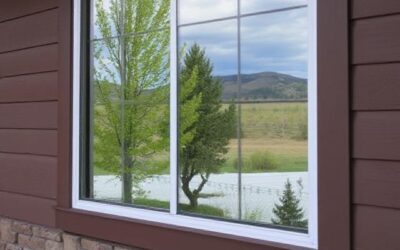How does Home Window Tint Reduce Heat?
Home window tinting is a popular solution for homeowners who are looking to reduce heat inside their homes. Heat-blocking window film is a specially designed window tinting material that reflects and absorbs solar radiation, thus reducing the amount of heat that enters your home. This article will discuss how home window tint reduces heat, the advantages of using it, factors to consider when choosing the right type of heat-blocking window film, and how to install it.
How does home window tint reduce heat?
Window tinting works by blocking out a significant amount of the sun’s rays before they enter the home. This means that heat doesn’t penetrate the glass, which keeps the indoor temperature much cooler. Window tinting films also absorb and reflect the sun’s energy, preventing it from heating up the space. This is why heat-blocking window film is an excellent solution for those who live in hot and sunny regions.
Heat-blocking window film comes in different types and grades, ranging from standard to high-performance materials. The type of window tinting material you choose will depend on your specific needs, such as the amount of solar radiation and heat gain in your home.
Advantages of using home window tint for reducing heat
Increased energy efficiency and cost savings
Home window tinting helps reduce the amount of heat that enters your home, which in turn reduces the load on your air conditioning system. This means that your AC doesn’t have to work as hard, resulting in lower energy bills and saving you money in the long run.
Improved indoor comfort and temperature control
Home window tinting keeps your home cooler and more comfortable by blocking out a significant amount of the sun’s heat. This means that you don’t have to rely as much on your AC system, and you can enjoy a more consistent and comfortable indoor temperature.
Protection against UV radiation and fading
Heat-blocking window film also protects your furniture, carpets, and other interior items from the sun’s harmful UV radiation. UV radiation can cause fading and damage to fabrics, and window tinting helps prevent this damage.

Factors to consider when choosing home window tint for reducing heat
The amount of solar radiation and heat gain in the home
The amount of solar radiation and heat gain in your home will determine the type of window tinting material you need. If your home gets a lot of sun exposure, you may need a high-performance window tinting material that provides maximum heat reduction.
The type and quality of window tinting materials
The type and quality of window tinting material will determine how effective it is at reducing heat. High-quality materials are more durable and provide better heat reduction than lower-quality materials.
The climate and weather conditions in the region
The climate and weather conditions in your region will also play a significant role in choosing the right window tinting material. If you live in a hot and sunny region, you may need a more robust material to combat the heat.
How to install heat-blocking window film for home windows
Installing heat-blocking window film is a straightforward process that you can do yourself. Here’s a step-by-step guide to help you get started:
Clean the window thoroughly
Before installing the window tinting film, make sure to clean the window thoroughly. Use a mild soap solution and a squeegee to remove any dirt or grime from the glass surface.
Measure the window
Measure the dimensions of the window and cut the window tinting film accordingly. Make sure to leave an extra inch or two on each side to ensure a good fit.
Apply the window tinting film
Spray a generous amount of the application solution onto the window and then apply the tinting film onto the wet glass surface. Use a squeegee to smooth out any bubbles or wrinkles in the film.
Allow the film to dry
Once the film is applied and trimmed, use a squeegee to remove any excess application solution and then allow the film to dry for at least 24 hours before touching it.
Tips and tricks for ensuring a successful installation:
- Work in a clean and dust-free environment to prevent dust or debris from getting trapped under the film.
- Apply the tinting film on a cloudy day or in a shaded area to prevent the film from drying out too quickly and becoming difficult to work with.
Conclusion:
In conclusion, home window tinting is an excellent solution for reducing heat and improving indoor comfort. Heat-blocking window film works by blocking out a significant amount of the sun’s rays and absorbing and reflecting solar radiation. This results in lower energy bills, improved indoor comfort, and protection against UV radiation and fading. When choosing the right type of window tinting material, consider the amount of solar radiation and heat gain in your home, the type and quality of window tinting materials, and the climate and weather conditions in your region. Finally, installing heat-blocking window film is a straightforward process that you can do yourself with a few basic tools and some patience.











